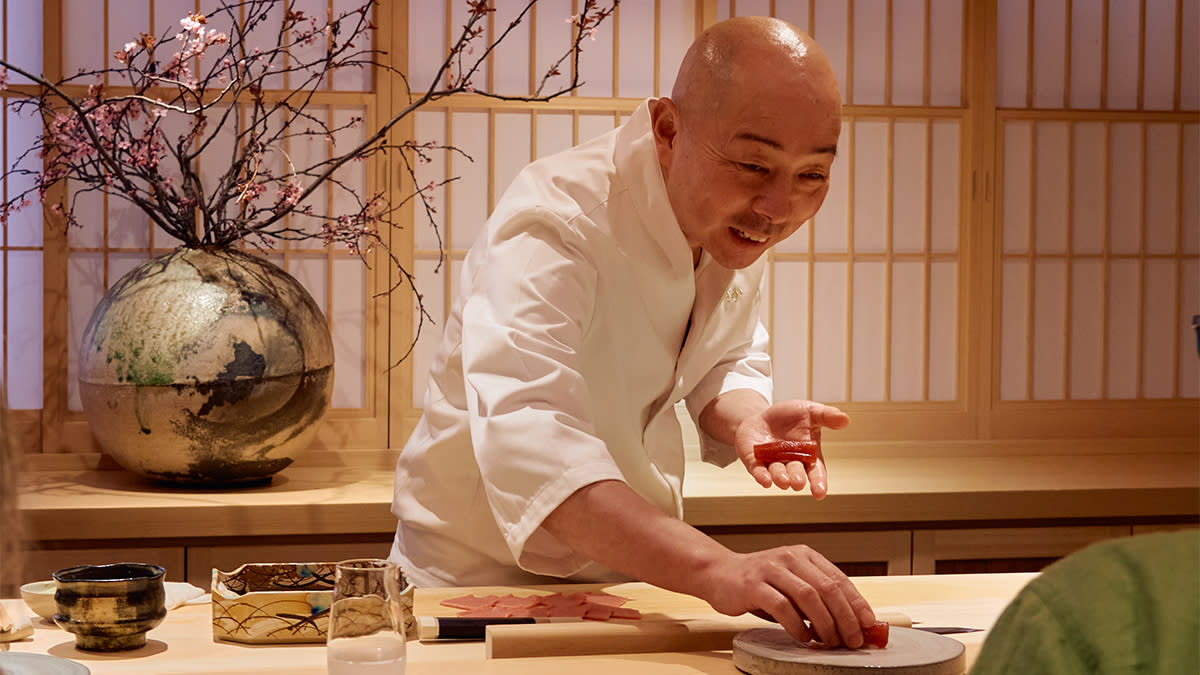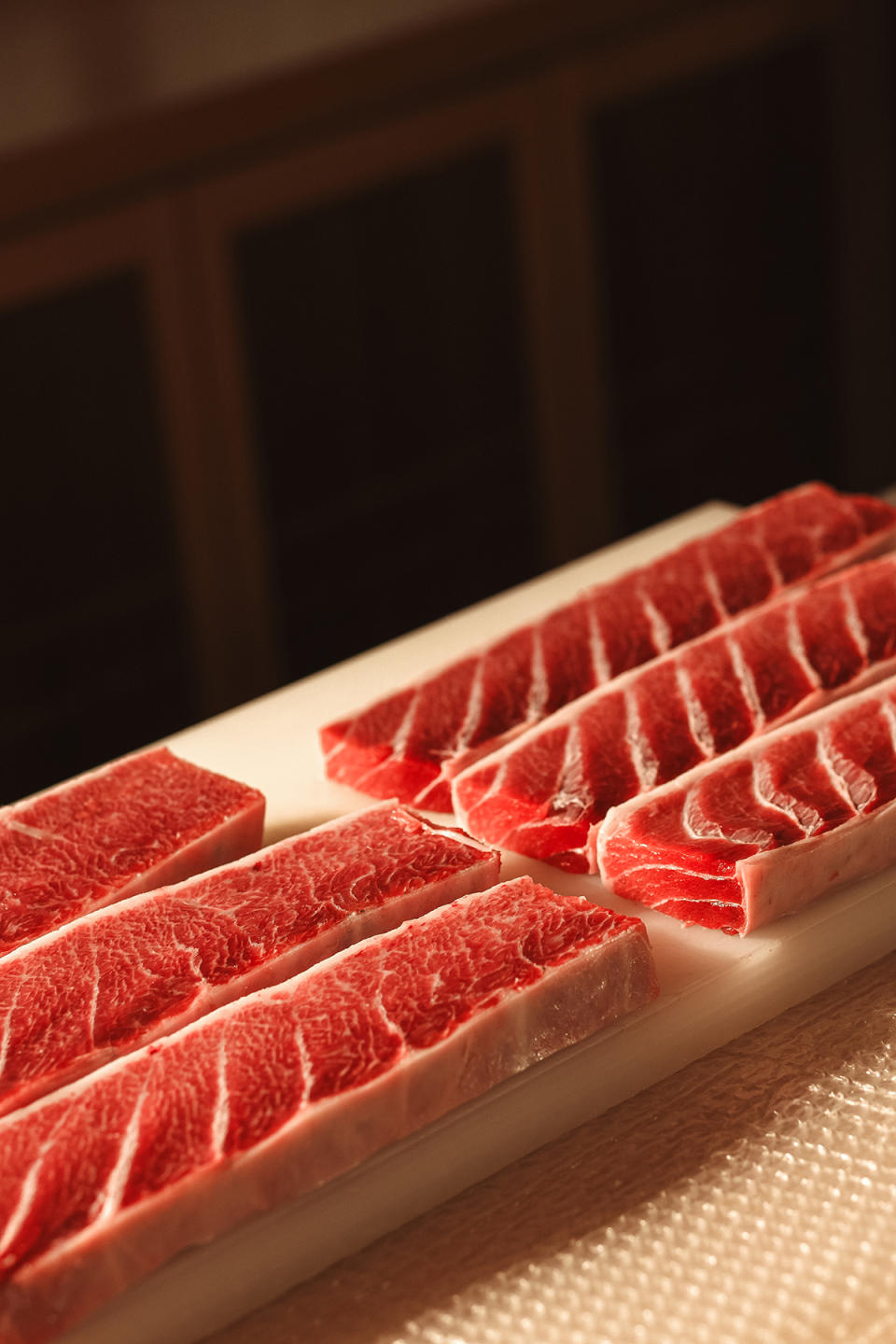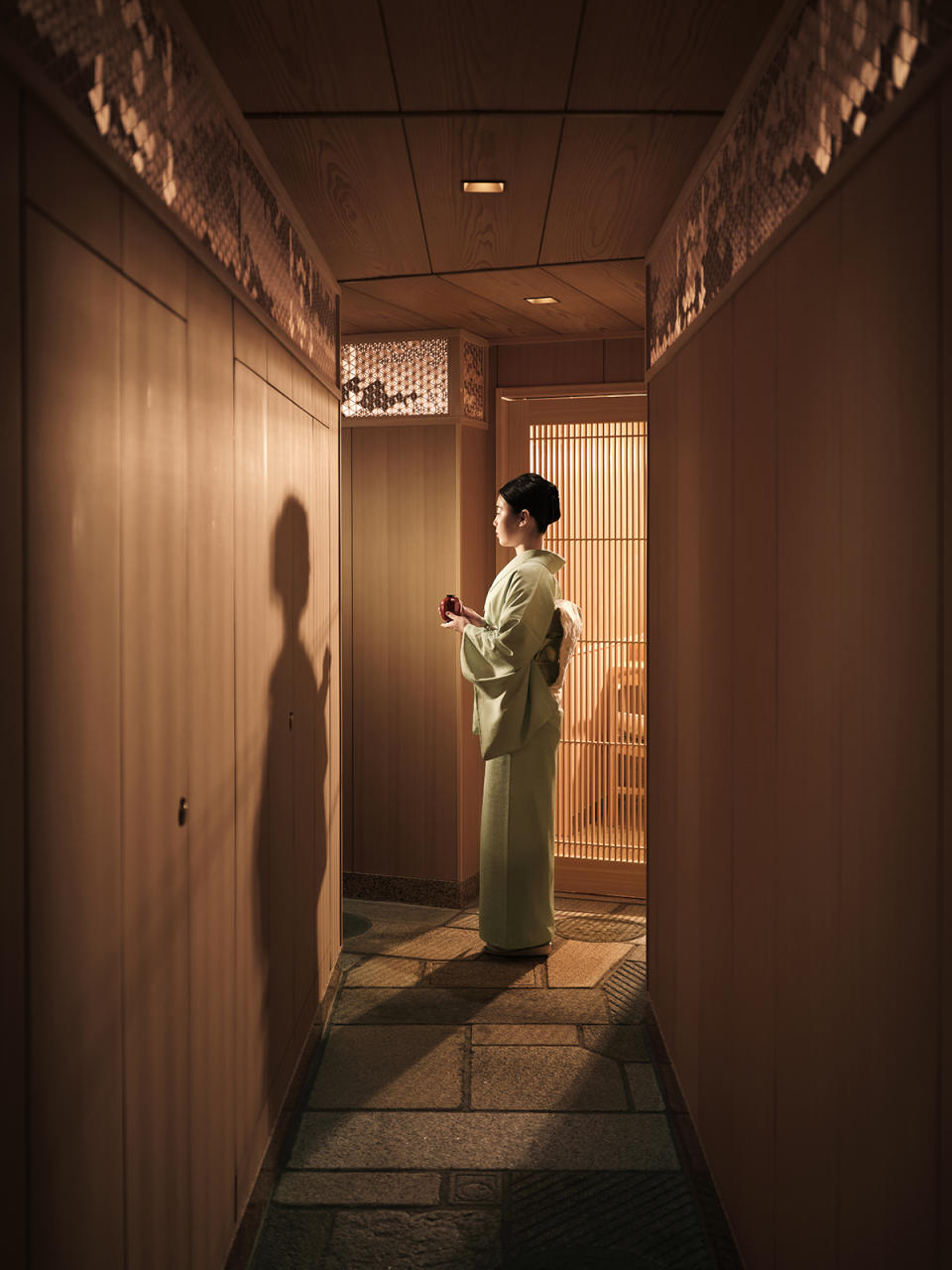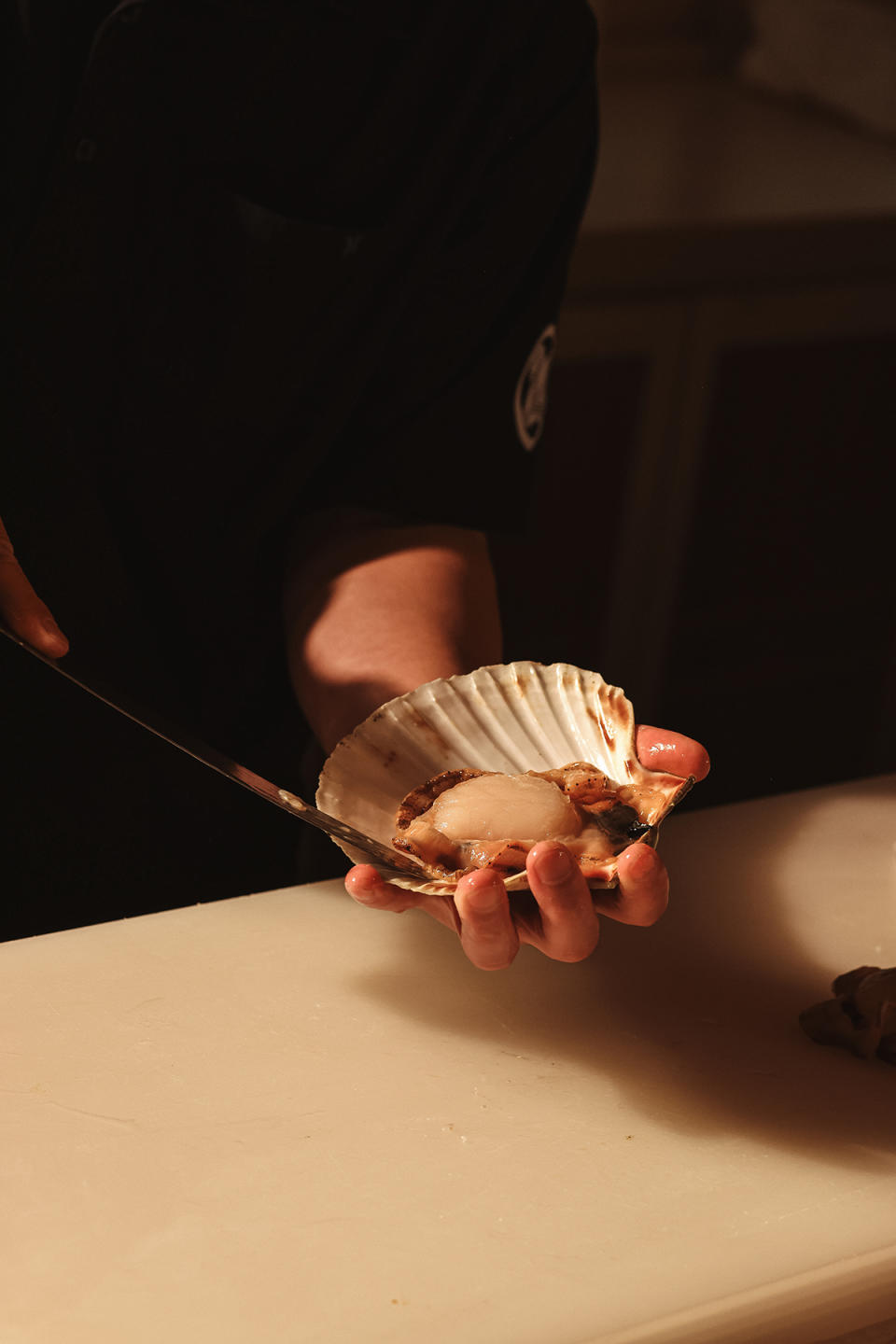Inside the Glorious Omakase of London’s Sushi Kanesaka, the U.K.’s Most Expensive Restaurant

London’s most expensive restaurant has its least visible presence. Sushi Kanesaka lies behind a dark, unmarked wooden door in Mayfair’s 45 Park Lane hotel, the exterior of which also fails to advertise the place. Further confusing matters, the entrance leads off a private room in the hotel’s Bar 45, whose dim, louche, ’50s Italian nightlife vibe clashes with the occasional appearance of a Japanese okami-san in traditional dress as she prepares for one of the evening’s two services. At which point bar patrons must wonder what, exactly, went into their Negronis.
But a restaurant doesn’t need shouty signage to grab passersby when there are only nine seats to fill and the set menu costs £420 (about $530). Chef Shinji Kanesaka holds two Michelin stars for his equally exclusive restaurant in Tokyo, and he has opened more in Japan, Singapore, and Hong Kong. The London outpost of Sushi Kanesaka, his first outside Asia, was awarded its own Michelin star in February, just seven months after it opened. And while other London restaurants offer more expensive individual statement dishes, such as the roughly $800 Wagyu tomahawk at Nusr-Et, Kanesaka’s 18-course set menu is the U.K.’s priciest, with sake pairings adding at least another $180 or so to that bill.
More from Robb Report
French People's Hunger for Frog Legs May Be Leading Some Species to Decline
Restaurants Are Charging Hefty Fees for Late Cancellations and No-Shows. Diners Aren't Happy.
How Humble Cabbage Became a Culinary Darling at Fancy Restaurants

Kanesaka-san came to London for a few days just as that Michelin star was announced, preparing his omakase menu for some of London’s other Michelin-starred chefs and a few invited guests, including Robb Report. While having your sushi prepared by the world-famous chef in Mayfair won’t be directly replicable by London diners, the experience inside the hotel restaurant (assuming you can snag a reservation) is otherwise very much the same as going to his original, equally tiny Ginza restaurant on which the London room is closely modeled. The London staff all trained there, and the interior is nearly identical in its artful simplicity, with the same traditional hinoki-wood ice chests and a counter made from a single length of the identical variety of cypress, in this case milled from a 500-year-old tree; its pale blond tone lightens the space and disguises the fact that there are no windows.
Unlike the conspicuous consumption of some of London’s other crazy-expensive restaurants, Sushi Kanesaka’s focus is simple perfection—an impression reinforced by the man himself, austerely clad in sandals and a sweatshirt, when he joins me in the bar for an interview before service. Yes, he says via interpreter, he’s aware that his menu is London’s most expensive, but no, that was never the intention. Yes, finding fish from local suppliers to his crazy-exacting standards was difficult, but he’s delighted with what he’ll prepare later. Where is the best sushi culture outside Japan? New York, he thinks, for the variety. He’d like to open there one day but has no immediate plans. (Hoteliers: Make him an offer.) Surprisingly, and very much unlike most other time-poor Michelin-starred chef patrons, he wants to continue talking even after answering my questions.

Service feels less like a meal, more like a performance or ritual. The simplicity of a sushi chef ’s tool kit is all the more striking here, given the monetary value of what Kanesaka-san is about to produce using just a pair of knives, a yukata rolling mat, and a towel to dab his fingers. Assistants ferry ingredients to him on hinoki trays, and he does the deft handiwork: skinning, slicing, forming, and folding almost everything you eat, with the battered Scottish lobster and seared Kobe beef cooked (very briefly) to one side.
The price and the reputation create an expectation of perfection, the idea that nothing must fail or the whole meal is a wash. Nothing does. The nori is crisp and bracingly saline, the house-blend rice from Yamagata unctuous and comforting. The fish spans a range of taste and sensation, from the clean oceanic pop of salmon roe to a richly sweet octopus that has been simmered for five hours. The sushi creations are presented as delicate single pieces but comprise a satisfying meal over 18 courses; the smoked-eel hand roll, in particular, has a generous heft. Everything is accompanied by the best sakes available anywhere, notably a buttery, unpasteurized Koueigiku Gekko and a barrel-aged Choryo Yamahai taru sake.

After an extremely precise (in every sense of the word) two hours you emerge, disconcertingly, back into 1950s Italy with a nagging feeling of regret. Not at the money spent—given the otherworldly quality and the monastic dedication of the man who prepared dinner, Costco couldn’t provide superior value—but at the realization that you’ll likely never eat better sushi in your life.
Best of Robb Report
Why a Heritage Turkey Is the Best Thanksgiving Bird—and How to Get One
The 10 Best Wines to Pair With Steak, From Cabernet to Malbec
Sign up for Robb Report's Newsletter. For the latest news, follow us on Facebook, Twitter, and Instagram.


